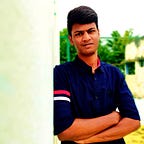Oracle Interview Experience (On Campus 2023)
Embarking on the journey to land a coveted role at a tech giant like Oracle was both thrilling and challenging. Here’s my personal account of the Oracle interview process for the role of Associate Software Engineer/Associate Application Developer, where I eventually secured my dream job offer.
Round 1: Online Test (100 Minutes)
The journey began with an online test on the Hackerrank platform. This 100-minute test was designed to gauge not only our aptitude but also our coding skills.
The multiple-choice questions (MCQs) covered various aspects of aptitude, challenging our problem-solving abilities. However, the real test of our technical prowess came in the form of two coding questions. One of them involved working with REST APIs, while the other tested our proficiency in Data Structures and Algorithms (DSA).
I was thrilled to successfully solve all the questions, with every test case passing. This round was manageable with an intermediate understanding of DSA concepts and regular programming practice.
Round 2: Technical Interview 1 (50 Minutes)
The first technical interview round was an intriguing 50-minute session. After introductions, the interviewer asked me to share insights about one of my projects and even requested a live demo.
Coding challenges followed, starting with the classic “reverse a string” problem. Next, I was tasked with the classic “swap two numbers without using a third variable” challenge, and it was important to optimize the solution. We delved into counting the number of word occurrences in a given string, touching upon important DSA concepts like HashMaps and hash sets.
The technical questions didn’t stop there. I was tested on my ability to identify balanced parentheses in a string efficiently. Then, the discussion shifted to Database Management Systems (DBMS), where I tackled queries involving, record deletion and JOIN operations.
I managed to confidently answer all these questions, securing my spot in the next round.
Round 3: Technical Interview 2 (45 Minutes)
The second technical interview continued with introductions and a deep dive into one of my projects, where I was probed about the intricate details of a Deep Learning project, including dataset usage, layers, and project flow.
The coding challenge in this round was intriguing. I was presented with a string, for example, “751028” and tasked with dividing it into multiple integers, each with more than two digits, and sorting them in increasing order. Crafting a solution in Python was both exhilarating and satisfying.
The interview reached its conclusion with a question about generating combinations of words from a given string, demonstrating my problem-solving skills.
As the interview wrapped up, I had the opportunity to ask any questions I had for the interviewer. With the successful completion of this round, I progressed to the next phase of the interview process.
Round 4: HR Round (40 Minutes)
The final hurdle was the HR round, lasting 40 minutes. The interviewer, started with introductions and an opportunity for me to introduce myself.
We delved into topics beyond the technical realm, discussing my hobbies and how I spend my time. Situational questions were presented, allowing me to showcase my problem-solving skills and adaptability.
A puzzle added a touch of complexity to the interview, followed by general discussions. My higher education plans were also a point of discussion.
The Oracle interview journey was an exhilarating experience that demanded not only technical proficiency but also effective communication and problem-solving skills. It’s a testament to Oracle’s commitment to recruiting top talent. If you aspire to join a global tech leader, remember to prepare thoroughly, stay confident, and seize every opportunity to showcase your abilities. Oracle, with its myriad of opportunities, awaits aspiring professionals like you.
